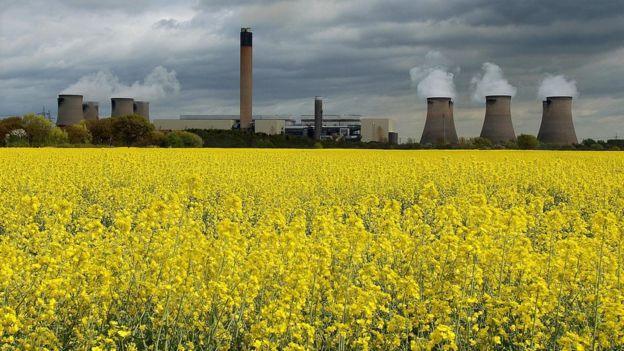Britain in two-week coal-free record
- Published

Britain has not used coal to generate electricity for two weeks - the longest period since the 1880s.
The body which manages the way electricity is generated said coal was last used at 15:12 on 17 May.
Fintan Slye, director of the National Grid Electricity System Operator (ESO), said the British record for solar power had also been broken this month.
Britain broke the record for a week of no coal earlier this month, which Mr Slye said would be a "new normal".
The government plans to phase out the UK's last coal-fired plants by 2025 to reduce carbon emissions and Mr Slye said there was "still a lot of work to do".
But he added: "As more and more renewables come onto the system, we're seeing things progress at an astonishing rate."
The world's first centralised public coal-fired generator opened in 1882 at Holborn Viaduct in London.
As coal plants take six hours to warm up, the ESO knows that it is on course to reach two weeks without coal after not using any since 17 May.
The longest period without coal before now ended on 9 May, when Britain lasted just over a week.
Before that, Britain had a coal-free period of 90 hours in April.
"As more and more renewables come on to the system, we're seeing things progress at an astonishing rate.," said Mr Slye.
"2018 was our greenest year to date, and so far, 2019 looks like it has the potential to beat it," he added.
On 14 May, Britain generated a quarter of its energy from the sun - the largest proportion yet.
When coal has not been used over the past fortnight, solar, wind, nuclear, gas and some hydro-generated power have been taking up the slack, the ESO said.
During the two-week period, on average gas made up nearly 40% of Britain's suppliers, nuclear 20%, wind 13% and other sources making up the rest.
Chris Skidmore, energy and clean growth minister, said: "The UK has the largest offshore wind capacity on the planet, can generate more than a quarter of our electricity needs from the sun and last year, more than half of our electricity came from low carbon sources."
- Published9 May 2019